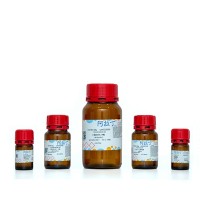One of the major bottlenecks in drug screening and structural biology on membrane proteins has for a long time been the expression of recombinant protein in sufficient quality and quantity. The expression has been evaluated in all existing expression systems, from cell-free translation and bacterial systems to expression in animal cells. In contrast to soluble proteins, the expression levels have been relatively low due to the following reasons: The topology of membrane proteins requires special, posttranslational processing, folding, and insertion into membranes, which often are mammalian cell specific. Despite these strict demands, functional membrane proteins (G protein-coupled receptors, ion channels, and transporters) have been successfully expressed in bacterial, yeast, and insect cells. A general drawback observed in prokaryotic cells is that accumulation of foreign protein in membranes is toxic and results in growth arrest and therefore low yields of recombinant protein.
In this chapter, the focus is on expression of recombinant mammalian membrane proteins in mammalian host cells, particularly applying Semliki Forest virus (SFV) vectors. Replication-deficient SFV vectors are rapidly generated at high titers in BHK-21 (Baby Hamster Kidney) cells, which then are applied for a broad range of mammalian and nonmammalian cells. The SFV system has provided high expression levels of topologically different proteins, especially for membrane proteins. Robust ligand-binding assays and functional coupling to G proteins and electrophysiological recordings have made the SFV system an attractive tool in drug discovery. Furthermore, the high susceptibility of SFV vectors to primary neurons has allowed various applications in neuroscience. Establishment of large-scale production in mammalian adherent and suspension cultures has allowed production of hundreds of milligrams of membrane proteins that has allowed their submission to serious structural biology approaches. In this context, a structural genomics program for SFV-based overexpression of 100 GPCRs was established.






